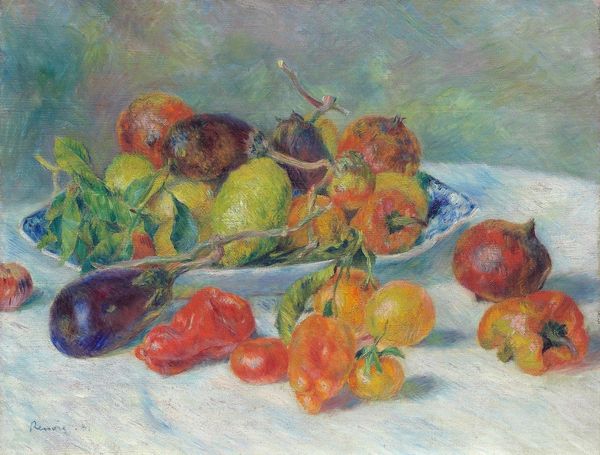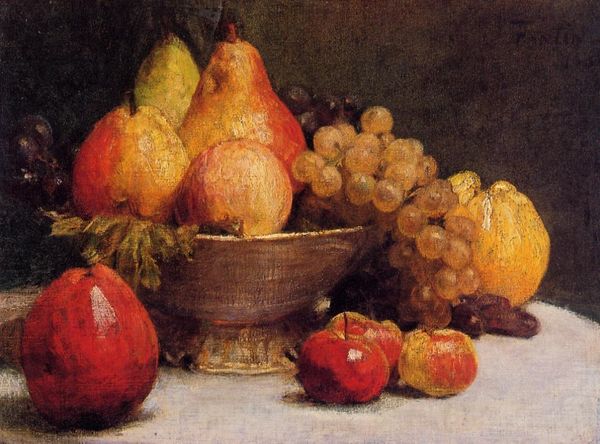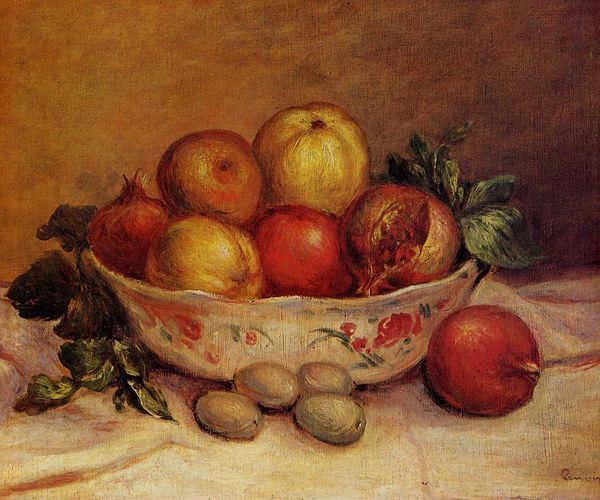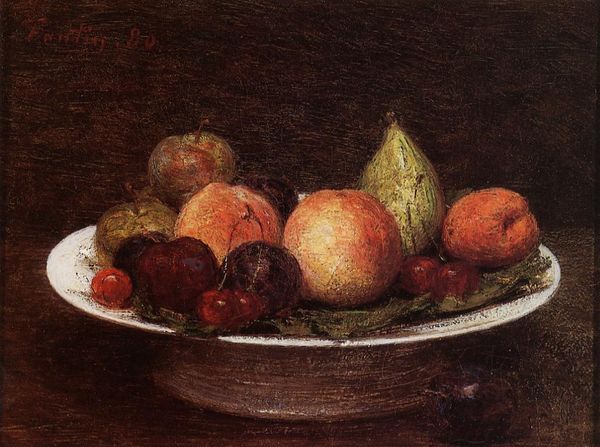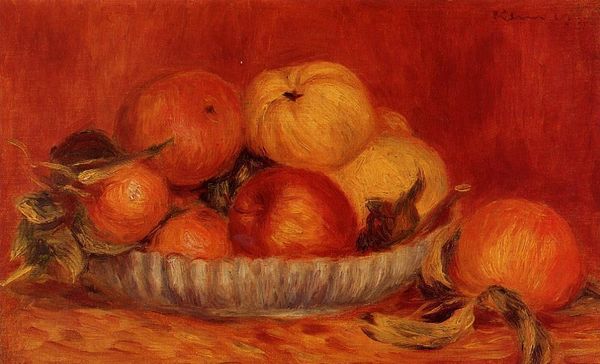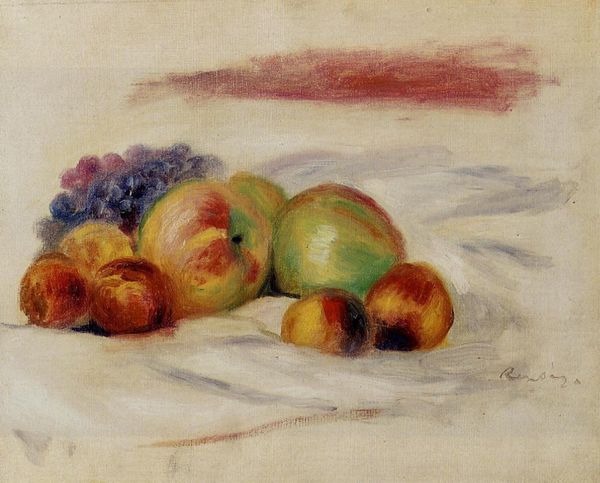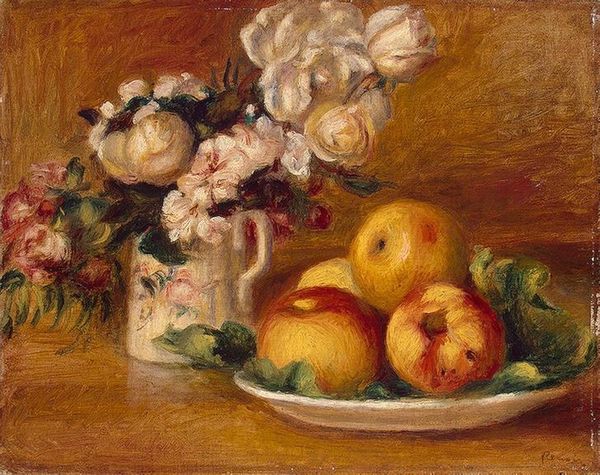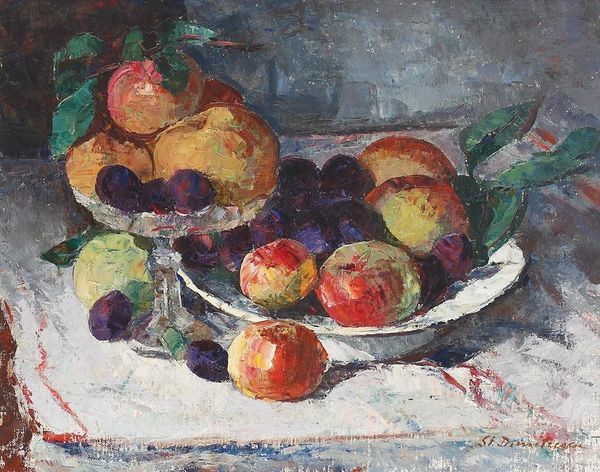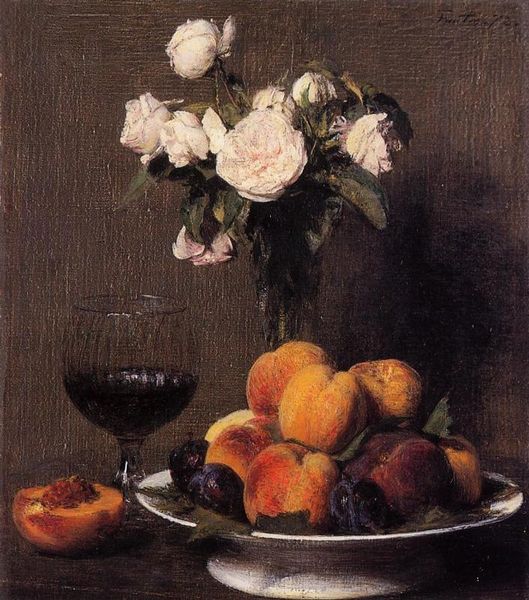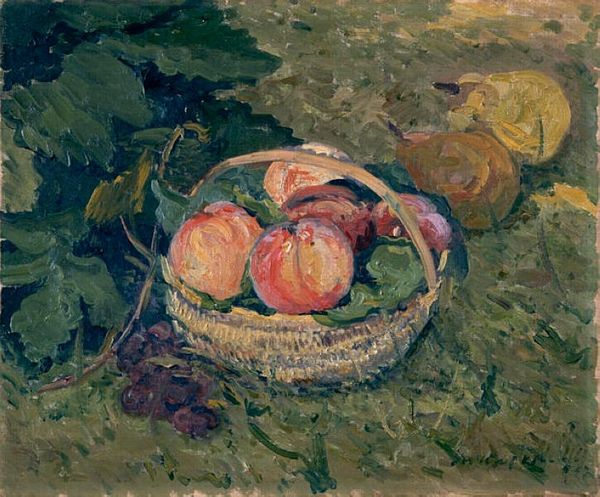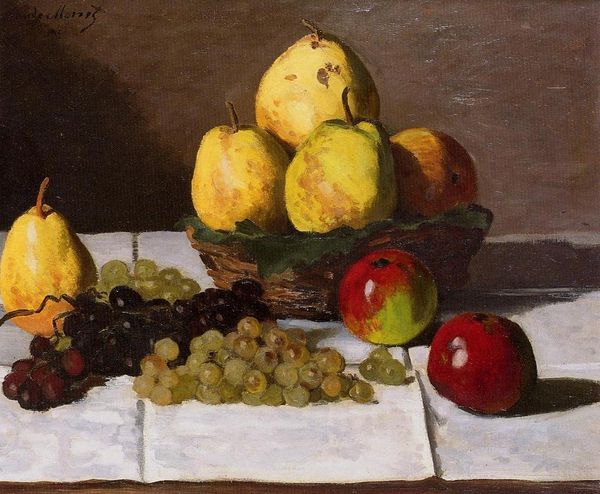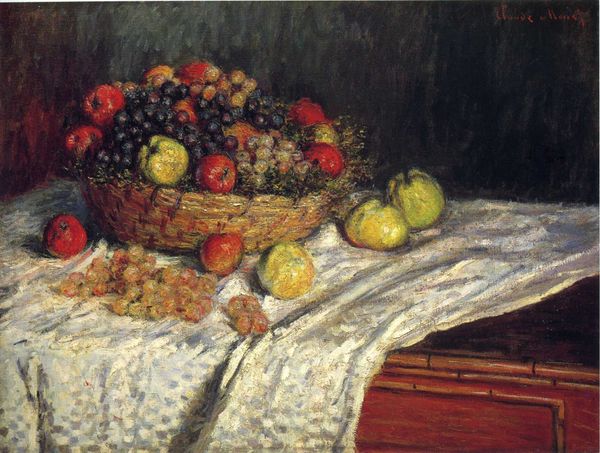
Dimensions: 57.5 x 44 cm
Copyright: Public domain US
Curator: Here we have Igor Grabar's "Still Life," an oil painting dating back to 1904. The loose, painterly strokes really give the work an immediacy. Editor: It's wonderfully informal. The light is so evocative, making me feel the coolness of the produce laid out against the stark white cloth. There’s a kind of quiet abundance here. Curator: The painting is striking in its seemingly casual composition; observe how Grabar carefully places each item: the apples, onions, even what appears to be a glass of juice. Do you feel any particular symbols emerge for you? Editor: The prominence of ordinary food evokes the earthiness of peasant life in pre-revolutionary Russia, where scarcity was the norm, perhaps implying hidden commentaries. Considering it was made in 1904, it could allude to looming food shortages and social unrest, though subtly coded. Curator: That's a fascinating read. The presence of specific fruits may allude to particular spiritual notions; apples, for instance, carry layered significations across varied religions, usually pertaining to salvation, knowledge, and temptations. Could they have served as visual parables within their time? Editor: It also raises questions of class, though; a display like this signifies an excess that might not be shared by everyone, given that we understand the socio-economic contexts of the era and region. What do you think of his chosen method and his color choice, in relation to this idea? Curator: There's a captivating luminosity that feels characteristic of the Impressionist movement, focusing, as you indicated, less on overt political statement and more on immediate sensorial impact and surface effect. Though I recognize its deeper resonance within that politically charged period. Editor: Precisely. It makes us reconsider our own consumption now, particularly how privileged access dictates the symbolism of food itself. Thank you for pointing to the light in it, though! I am always captured by art that on its face simply reflects on that quality. Curator: It's enriching to observe these still lifes with a deeper recognition of their implicit weight and continuing relevance. Editor: I appreciate seeing that art-historical context alongside the psychological cues within art. It shows how any object becomes heavy when humans view and wield it, both within the piece, and beyond.
Comments
No comments
Be the first to comment and join the conversation on the ultimate creative platform.
